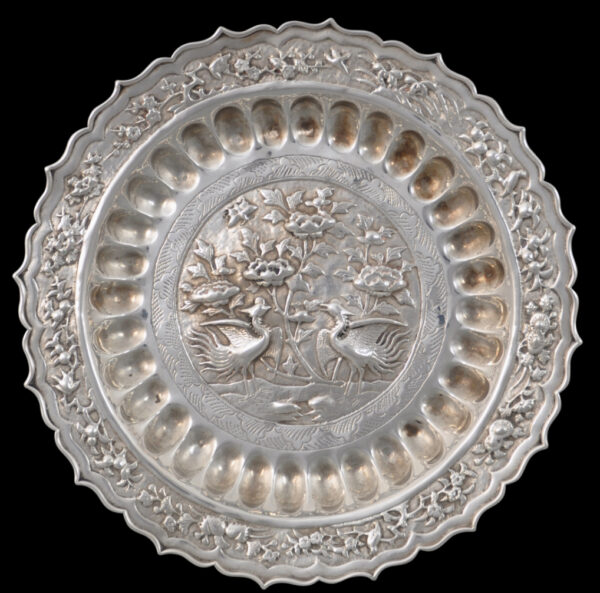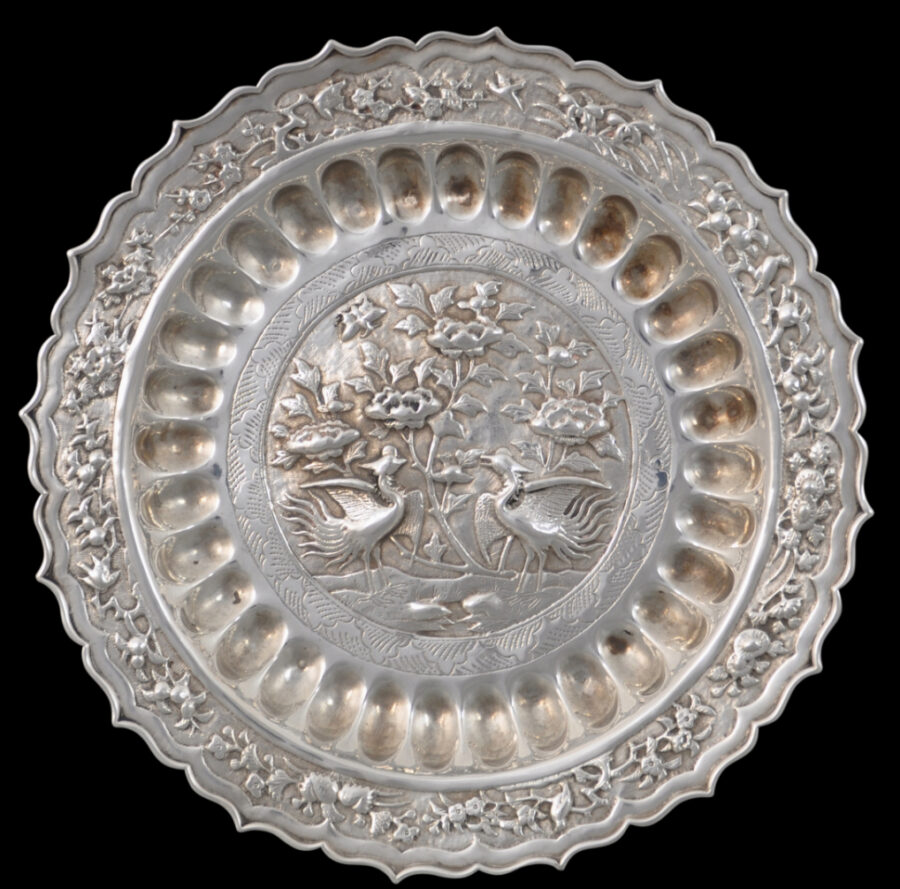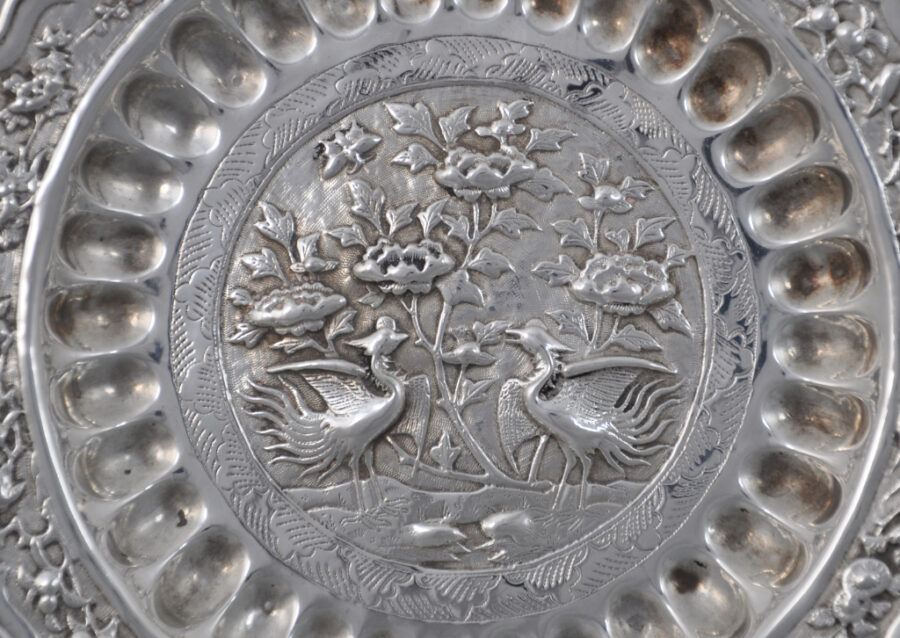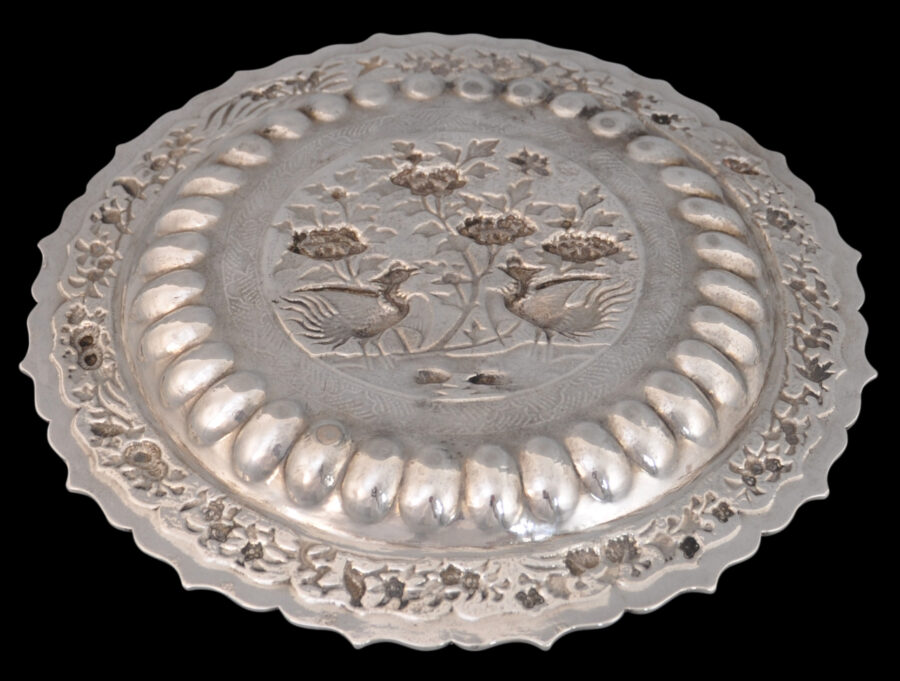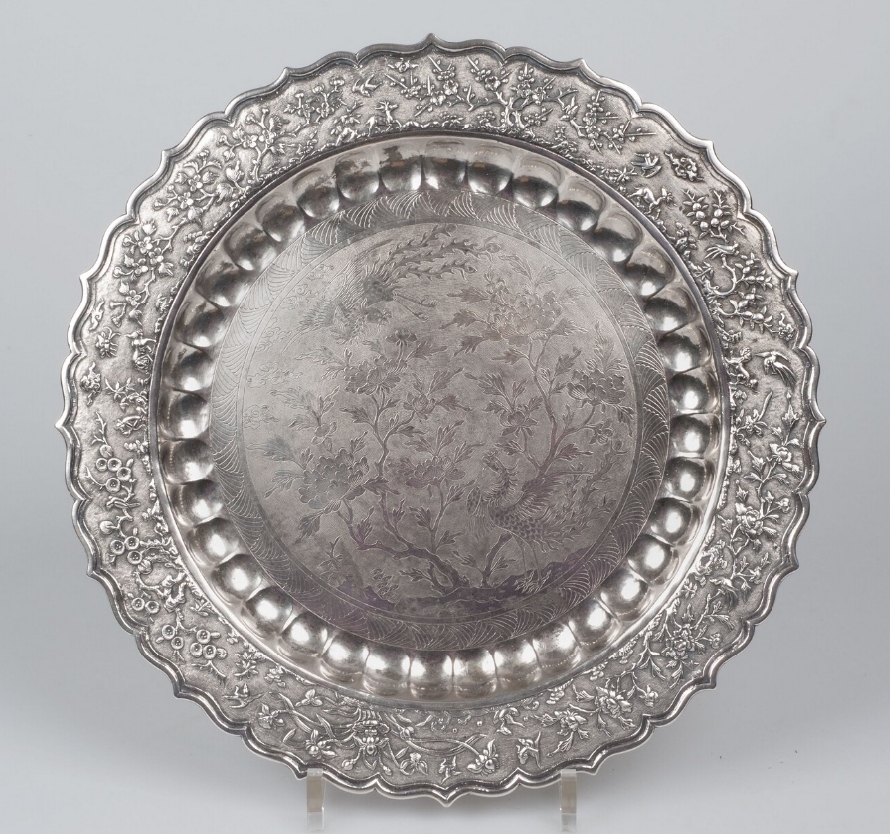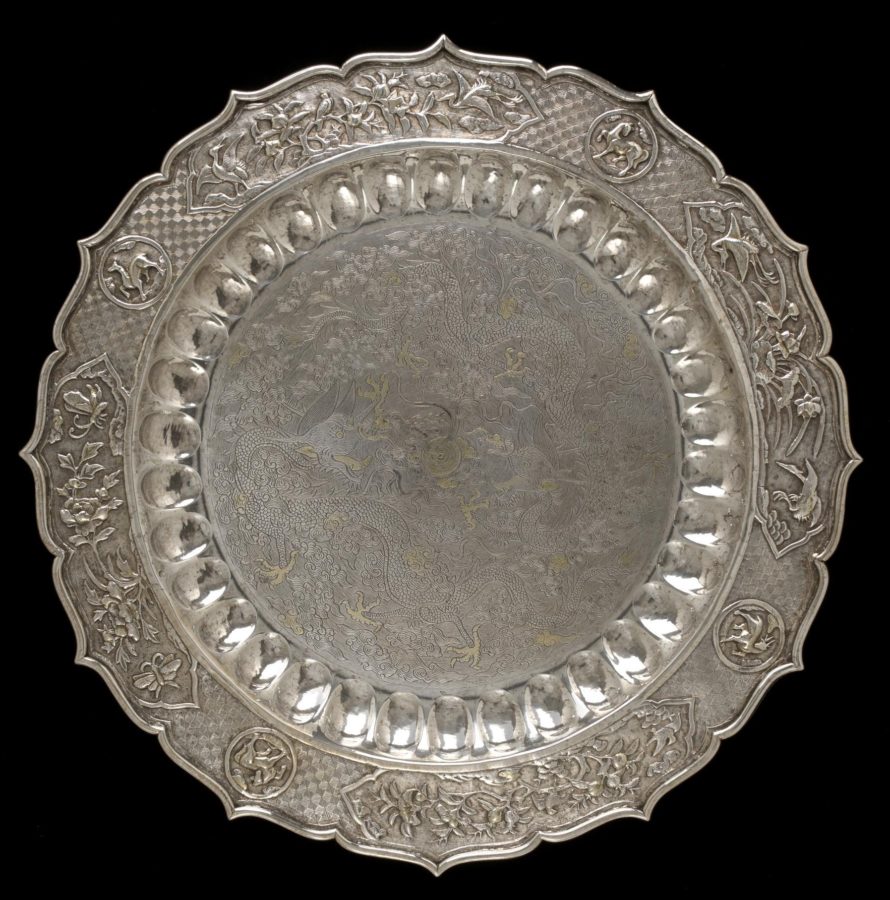This Dutch-style plate or dish ostensibly is in a Chinese style but is almost certainly from late 17th century Batavia in the Dutch East Indies. It has been made from high-grade silver – of a grade almost certainly higher than sterling.
The style is suggestive of Chinese work but it is not Chinese export silver but part of a small group of similar items in silver that are likely to have been made by identifiably ethnic Chinese silversmith in Batavia in the Dutch East Indies on behalf of the Dutch East India Company or the Vereenigde Oostindische Compagnie (VOC), in the late 17th century. The form of the platter also suggests Indian influence.
The Javanese-Batavian provenance of this plate is further testified to by the presence of an inscription faintly scratched into the reverse of the rim in Javanese script.
The plate here comprises a wide, scalloped, reinforced rim chased with Chinese flower motifs in relief against a finely tooled background. The cavetto is decorated with a border of oval-shaped depressions in the manner seen on north Indian silver platters.
The roundel in the interior base is decorated with a pair of phoenixes standing beneath peony blooms, all in high relief, and against a tooled background. The roundel is enclosed by a border of hatched cloud motifs.
Two larger platters in museum collections have related elements.
One example is in the National Museum of World Cultures (Tropenmuseum) in the Netherlands. This example is important. Chinese in design and motif, ordinarily, it would be thought to be from China, but it is stamped on the reverse with several assay marks that reveal that it is in fact VOC silver. The marks are clear and are assay town marks for Batavia as well as some maker’s marks. (Only silver with a maker’s mark was tested and received an assay mark.) The platter is thought to date to 1713. (See the second-to-last image below for this platter.)
The other platter is in London’s Victoria & Albert Museum and was seized from the grounds of Tipu Sultan’s palace in the aftermath of the siege of Seringapatam in 1799, when British forces laid waste to the palace of the then ruler of the Kingdom of Mysore in south India. (See the final image below for this example.) This example is listed in the V&A’s inventory as being from China, but that is a supposition only, and judging from the Netherlands example, an imprecise one. Almost certainly, the Tipu Sultan platter is VOC silver from Batavia (as in fact are several items of silver from Tipu Sultan’s palace – probably they were gifts from the VOC.)
Early photographs of other similar VOC silver platters that were in the Hervormde Kerke (Church) in Depok (Java) are in collection of the Royal Netherlands Institute of Southeast Asian and Caribbean Studies (KITLV). The whereabouts of these platters no longer is known and in all probability they were melted for their silver content.
Another item of silver that is VOC and Batavian but is in a Chinese style is illustrated in van Campen & Hartkamp-Jonxis (2011, p. 63).
VOC colonial Dutch silver from Batavia intended for use by Europeans is quite rare. Veenendaal (2014, p. 101) makes the point that towards the end of the VOC’s rule in Batavia and following its bankruptcy, conditions for the European and Eurasian residents of Batavia became harsh and impoverished. Much of the silverware belonging to the European population was requisitioned to mint coinage and undoubtedly to help pay off VOC debts. Silver held by churches and in indigenous hands survived and this has become the source of much of what has survived today. Veenendaal describes much of the Batavian silver as having ‘originally Dutch style, but with Chinese motifs’. The platter here is in that vein.
The plate is in fine condition. It has plenty of wear and signs of significant age. It is without loss or repairs. It is a rare item.
Note: The final two images below show related silver platters in the Tropenmuseum and the V&A respectively.
References
Brinkgreve, F., & J. Leijfeldt, ‘The Chinese-Indonesian collection in the National Museum of World Cultures, the Netherlands’, Wacana, Vol. 18, No. 2. 2017.
de Bruijn, M., et al, Sawasa: Japanese Export Art in Black and Gold, 1650-1800, Rijksmuseum/Waanders Publishers, 1998.
van Campen, J., & E. Hartkamp-Jonxis, Asian Splendour: Company Art in the Rijksmuseum, Walburg Pers, 2011.
Eliens, T.M., Silver from Batavia/Zilver uit Batavia, Gemeentemuseum Den Haag/W Books, 2012.
Frederiks, J.W., Dutch Silver: Embossed Plaquettes, Tazze and Dishes from the Renaissance until the end of the Eighteenth Century, Martinus Nijhoff, 1952.
Krohn D.L. & P.N. Miller (eds.), Dutch New York Between East and West: The World of Margrieta van Varick, Bard Graduate Center/The New York Historical Society/Yale University Press, 2009.
Lingner, R., & C. Onn, ACM Treasures: Collection Highlights, Asian Civilisations Museum, 2017.
Veenendaal, J., Asian Art and the Dutch Taste, Waanders Uitgevers Zwolle, 2014.
Voskuil-Groenewegen, S.M., V.O.C. – Zilver: Zilver uit de Periode de Verenigde Oostindische Compagnie, 17de en 18de eeuw, Gemeentemuseum, Den Haag, 1983.
Voskuil-Groenewegen, S.M. et al, Zilver uit de tijd van de Verenigde Oostindische Compagnie, Waanders Uitgevers, 1998.
Zandvliet, K. et al, The Dutch Encounter with Asia 1600-1950, Rijksmuseum Amsterdam, 2002.


